B2B Organic Growth: 8 top lessons for leaders

We call our bosses “leaders” out of respect for their organizational position. But do they drive B2B organic growth? How many would pass this one-question pop quiz: What is the foremost duty of a business leader? What’s your answer?
I believe the correct answer is: Leave your business stronger than you found it. Some might disagree, saying job #1 is to maximize shareholder wealth. But pumping up the stock price during an executive’s tenure cannot be the first test of leadership. What if he did this by cost-cutting that degraded his company’s growth capabilities and mortgaged its future?
If a question as fundamental as this causes consternation, then I think you see where we’re going: Leadership requires more than organizational advancement. In the same way you would master chess or a second language, leadership requires learning.
We’ve been fortunate at The AIM Institute to observe hundreds of business leaders as they pursued B2B organic growth. We’ve seen “what works” and have captured 30 lessons in the e- book, Leader’s Guide to B2B Organic Growth. You can even sign up to receive a free 2-minute video lesson each week for 30 weeks… an executive short-course in leading growth.
In the same way you would master chess, leadership requires learning.
I invite you to make it your mission to “learn leadership” regardless of your position today. For now, let’s look at what I believe to be the eight most important lessons from the 30 covered in our e-book.
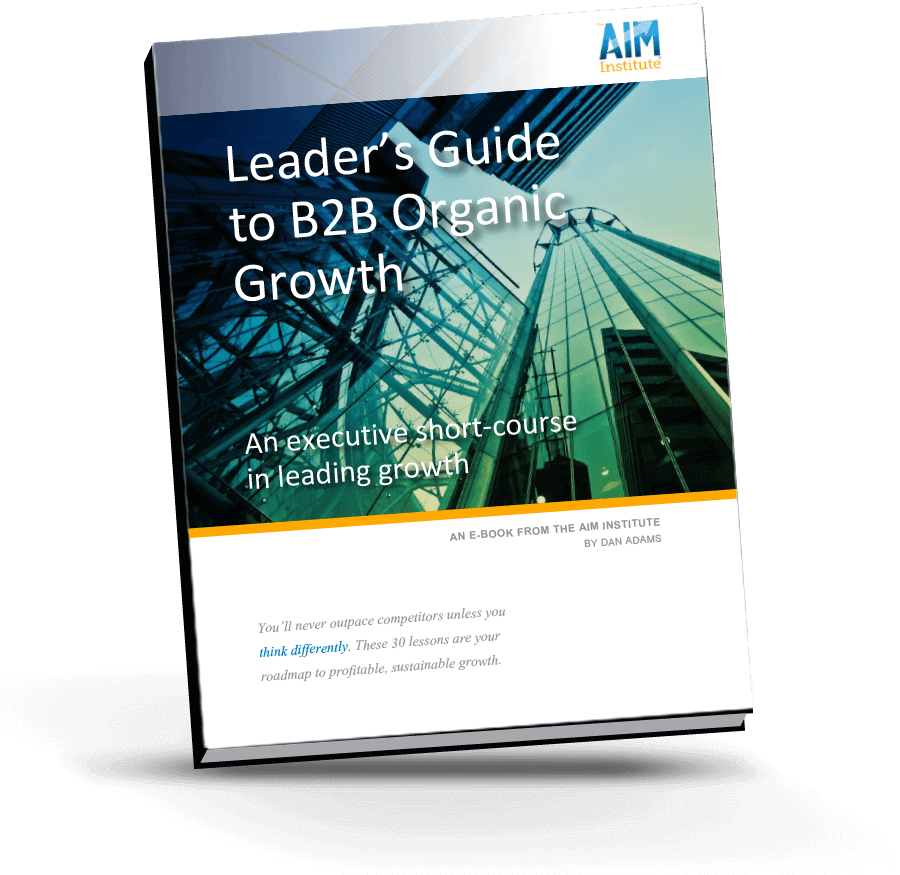
1. Become a builder for B2B organic growth (Video Lesson #2)
Like it or not, every business leader becomes known for something. You might be a remodeler, always “fixing the place up.” Improving productivity and quality is helpful work, but nothing new is being created. Others are decorators, trying to boost “curb appeal” … every… single… quarter. Yet others are realtors, focused on the next acquisition, not growing their existing business.
Your company was founded by builders, and this is the noblest legacy you can leave. If it is within you, be the builder that brushes aside fads, distractions and financial gymnastics. Instead focus on delivering real value to customers. Thus driving B2B organic growth, increasing profitability and stature… and providing your employees with stable, rewarding careers.
2. Rethink your true-north goal (Video Lesson #5)
For several decades, “maximize shareholder wealth” has been the mantra recited in boardrooms and executive speeches. This is changing: Jack Welch even called it “the dumbest idea in the world.”
Maximizing shareholder wealth is a lovely result… but a lousy goal. Your employees need goals that are actionable and inspiring. Chasing quarterly earnings per share fails this test. Instead, focus employees on creating superior customer value through new products and services. This leads to profitable, sustainable B2B organic growth… which reliably leads to increasing shareholder wealth.
3. Re-prioritize your initiatives (Video Lesson #6)
The landmark book, The Three Rules, shows exceptional companies focus on a) creating higher-value products, not cheaper ones, and b) revenue growth, not cost-cutting.
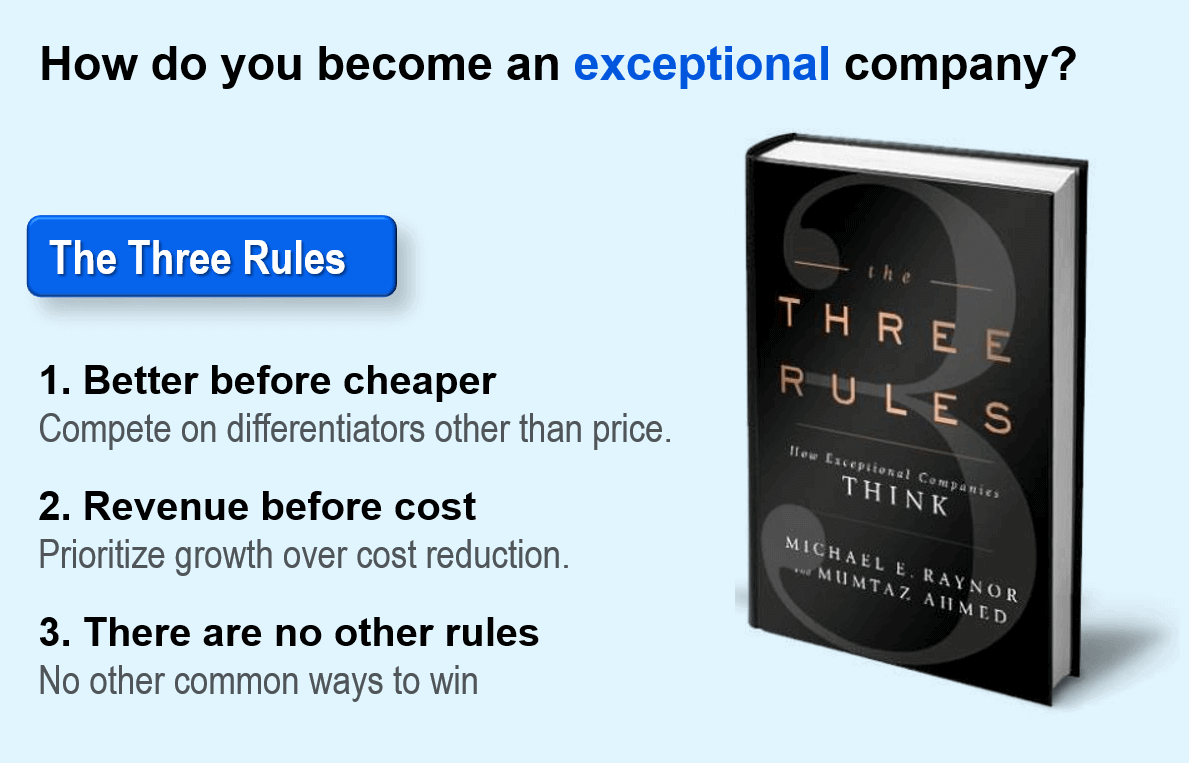
What initiatives are you focused on right now? Quality, productivity, global expansion, acquisitions? While these can be useful, none will propel you toward the holy grail of B2B organic growth… growth that is rapid, profitable, and sustainable. Don’t let these side shows distract you from the main show… understanding and meeting customer needs better than others. As Peter Drucker said, the purpose of business is to create and keep customers.
4. Recalibrate your time horizon (Video Lesson #7)
Imagine you’re at a financial review discussing revenue, price and margins. You are engaged in a spectator sport, because it’s too late to change today’s financial performance. What if your meetings three years ago focused on developing blockbuster products? That was a participant sport, because your longer time horizon allowed you to impact future financial performance, not just talk about it. Leadership means knowing which meetings make a difference.
You are engaged in a spectator sport, because it’s too late to change today’s financial performance.
5. Build your B2B organic growth capabilities (Video Lesson #9)
It may seem counterintuitive, but many business leaders focus too much on business results. The wise business leader balances the pursuit of results with the pursuit of capabilities.
Think about it. Can you name any endeavor—chess, golf, gymnastics—where the champions didn’t first build their capabilities? Their victories (results) came later. So why do some business leaders focus only on quarterly results, hit the “reset button,” and start all over again?
When you see such a leader, picture an amateur at the base of El Capitan preparing to climb. He has the wrong shoes, no climbing skills and flabby abs… in other words, no capabilities. But boy oh boy, is he ever eager to climb. Yes, he wants results.
6. Immerse in customer outcomes (Video Lesson #13)
Even if you conduct customer interviews, you may be at “Level 2,” where you try to validate your solution with the customer. In this case you don’t understand market needs, just market reaction… to one idea… your idea. Life is better at Level 3. Here you diverge to all customer outcomes (to avoid errors of omission), and then converge to outcomes they most desire (to avoid errors of commission.)
7. Insist on data-driven innovation (Video Lesson #19)
Confirmation bias should make us all nervous. This is seeking and interpreting information in a manner that supports our pre-existing views. It’s subtle. And it’s killing your new product success rate, because customers’ true needs are filtered, distorted, and obscured.
The antidote is simple: Conduct unbiased quantitative interviews in which customers rate their outcomes for importance and current satisfaction. Your R&D then pursues just those outcomes scoring high in importance and low in satisfaction. After all, these are the only outcomes customers would pay a premium for. This is the single most powerful practice for slashing commercial risk and boosting innovation success.
This is the single most powerful practice for slashing commercial risk and boosting innovation success.
8. Pursue fast innovation (Video Lesson #20)
This may sound harsh, but some executives would accelerate innovation and B2B organic growth by staying home. Their positions prevent them from personally contributing to innovation through lab-work or extensive customer interviewing. They could invest in building their people’s growth skills, tools and capabilities, but they’re too focused on short-term results.
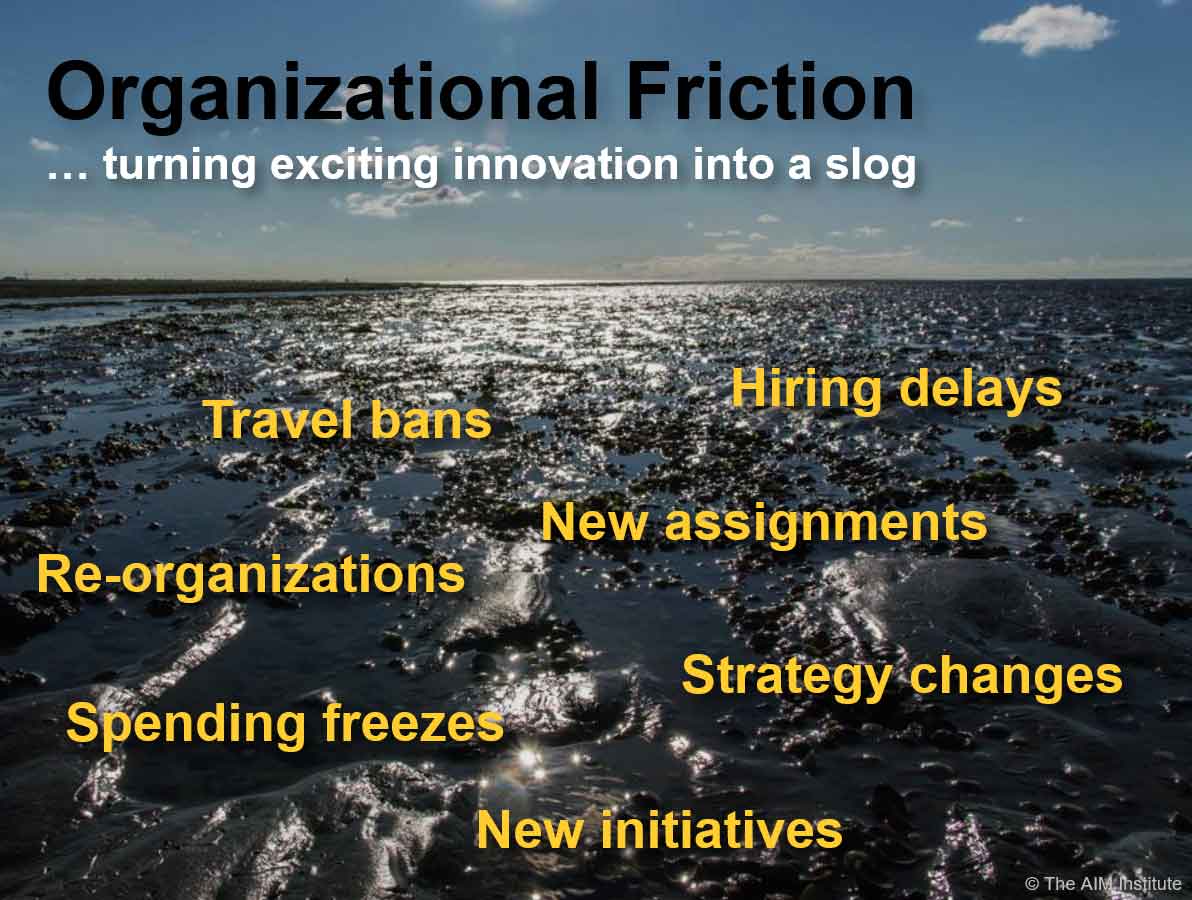
So what levers do these executives pull? Sadly, those that turn exciting innovation into a slow… moving… slog. I call this organizational friction: travel bans, hiring delays, re-organizations, spending freezes, and so on.
If you’re tempted by these short-term steps, imagine a project that leads to new product sales of $5 million/yr. The net present value of launching this just one month earlier is ~$80,000. That’s $4000 per business day! Instead of delaying projects with organizational friction, pursue some innovation urgency.
Click here to learn more about the B2B Growth Diagnostic tool.
Where does the journey to B2B Organic Growth begin?
To be fair, leaders are in a tough position. They have immense short-term pressures and heavy workloads, giving them little time to learn anything new. But if learning and mastering leadership is your aim, the rewards will be great.
Precisely because most leaders do not study leadership, you will stand out. You’ll earn the respect of those you lead, enjoy the confidence that comes from shaping your future, and develop a reputation as a builder of something great.
First, consider benchmarking your company’s current state with our B2B Growth Diagnostic. Your company will be evaluated on 24 growth drivers to provide that elusive profitable and sustainable growth.
Next, can you afford 2 minutes per week to get started? Sign up for these complimentary 30 weekly video lessons. Each video introduces an article, research report or white paper so you can “go deeper” on topics that interest you.
There’s a lot to consider and apply in this short course. It’s our pleasure to share it freely with those passionate about improving their ability to become builders… architects of their own B2B organic growth.
Can you afford 2 minutes per week to get started?
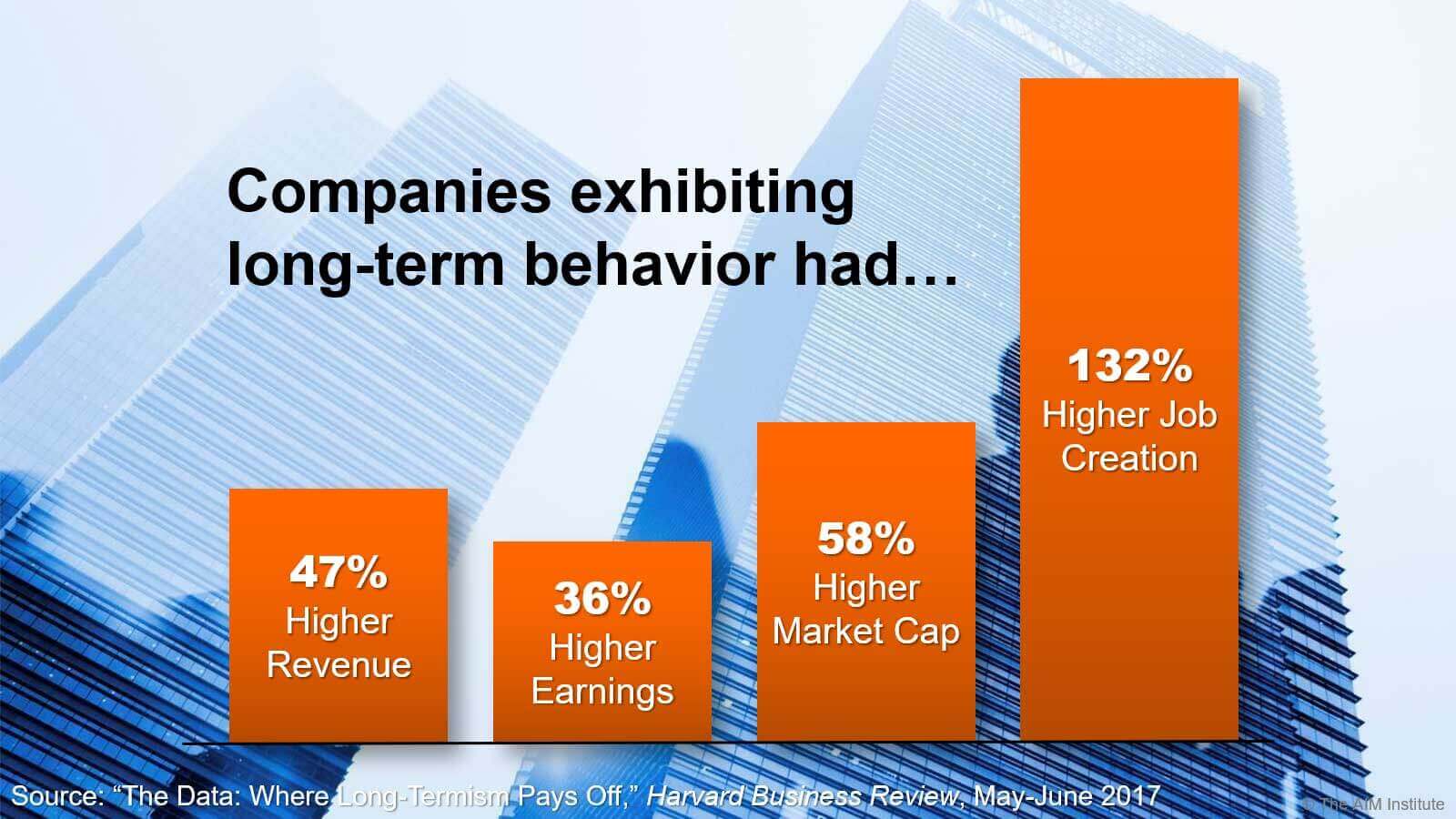
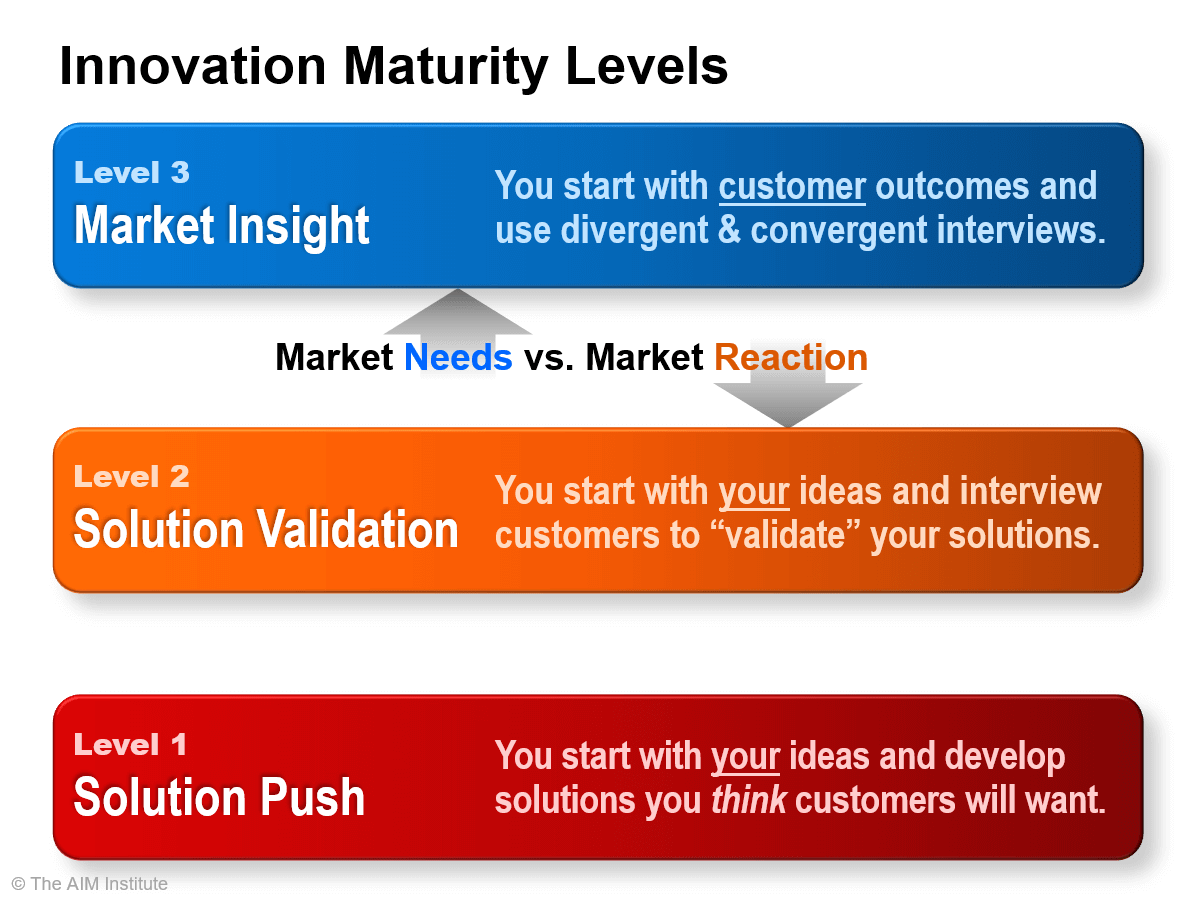
Thanks for sharing. I read many of your blog posts, cool, your blog is very good.
Can you be more specific about the content of your article? After reading it, I still have some doubts. Hope you can help me.
Your article helped me a lot, is there any more related content? Thanks! https://www.binance.com/es-MX/register?ref=JHQQKNKN
Thanks for sharing. I read many of your blog posts, cool, your blog is very good.
I don’t think the title of your article matches the content lol. Just kidding, mainly because I had some doubts after reading the article.